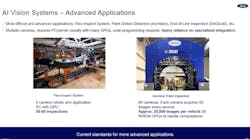Russian Billionaire, Stephen Hawking to Build Butterfly-Size Spaceships
Yuri Milner, the Russian billionaire who’s backed various Internet and space ventures, along with the famed theoretical physicist Stephen Hawking, is poised to unveil another wildly ambitious research project on April 12 at an event at One World Trade Center.
Breakthrough Starshot is funded by a $100 million grant from Milner with the goal of finding faraway planets capable of sustaining life. The grant comes in addition to the $100 million he put toward the Breakthrough Listen project last year, which will search the universe for intelligent beings over the next 10 years.
For the new endeavor, Milner’s team plans to develop tiny, unmanned spaceships—“light-propelled nanocrafts,” as Breakthrough calls them—designed to fly into the Alpha Centauri star system on a research mission that will take at least 24 years to complete.
While Milner’s Breakthrough Listen project has achieved no such breakthrough in the first few months of its existence, this has not deterred the 54-year-old technology entrepreneur and investor from continuing to commit portions of his fortune in service of quixotic aerospace research.
Milner said the idea isn’t as far-fetched as it sounds. “It’s doable in our lifetime,” he insisted in an interview. He has recruited a team that includes former NASA scientists and engineers. Facebook Inc. co-founder Mark Zuckerberg will join the project’s board of directors.
Tech billionaires are increasingly turning their attention to ambitious space projects, often with impressive results. On April 8, Elon Musk’s aerospace company Space Exploration Technologies Corp. launched a cargo mission to the International Space Station and landed the first stage of the rocket on a barge off the coast of Florida, the first time the company has successfully managed such a feat. Meanwhile, Blue Origin, which was founded by Amazon.com’s Jeff Bezos, has recently performed several landings of its own rocket on land. Bezos is scheduled to discuss his ambitions on Tuesday at the Space Symposium in Colorado.
Whereas Bezos and Musk have spoken of eventually launching humans into space—or even settling Mars—Milner’s proposed project aims much, much farther afield. The hope is to take advantage of advances in computer chips made by the consumer electronics industry over the past 15 years, as well as improvements in lasers, which would be needed to help power the spaceships and allow them to send photographs and atmospheric data to scientists on Earth. The proposed destination: Alpha Centauri, the star system nearest our own, which some astronomers believe may contain planets capable of supporting life.
“We want to challenge the world’s scientists and engineers to do something really amazing,” said Pete Worden, the executive director of the effort and the former director of NASA’s Ames Research Center. “From a physics standpoint, there are no deal breakers. There are certainly engineering challenges.” The most significant among them: distance. Alpha Centauri is 4 light years away, meaning it would take something like 30,000 years to get there using the fastest spacecraft available today, according to Breakthrough Starshot.
Milner and Worden plan to deal with this by going small. Their proposed spaceships will be tiny—roughly the size of a butterfly—and powered not by rocket fuel but by giant solar sails that will be pushed by lasers on the ground. The Breakthrough Starshot team will attempt to design ships that can travel at one-fifth the speed of light—134 million miles per hour—and will launch thousands of them in case some break down or are destroyed along the way. Assuming all goes well, the crafts will arrive in Alpha Centauri after a 20-year journey. They’ll take pictures of the planets and beam the photos back to Earth, which will take another four years.
Milner, whose parents named him after the Russian cosmonaut Yuri Gagarin, studied physics at Moscow State University before helping to start a series of Internet companies. Thanks in part to a prescient investment in Facebook, Milner has accumulated a fortune worth $3.2 billion, according to the Bloomberg Billionaires Index. Starting in 2012, he set upon an ambitious second career as a scientific patron .
As part of this “hobby,” as he described it, Milner has funded a series of rich scientific prizes in physics, math, and life sciences. Last July, he announced that he would spend $100 million on Breakthrough Listen over the next decade, reinvigorating what had been a mostly dormant search for extraterrestrial life.
Milner was inspired in part to launch the new Breakthrough Starshot after seeing a postage-stamp-size spacecraft built by KickSat, a Kickstarter-funded research project that began its first mission in 2014. Though KickSat’s spaceships don’t have engines or the cameras needed by Milner’s butterfly ships, they were created with a very modest budget that included a roughly $75,000 Kickstarter campaign. “This is a glimpse of the future,” Milner said as he extracted one of KickSat’s computer-chip-like spaceships from his jacket pocket.
Milner and Worden are hesitant to discuss timing, but they say that the mission is achievable within a generation, assuming that advances in lasers and chips continue apace. Worden estimated that the program will eventually cost somewhere around $10 billion, about what the European Organization for Nuclear Research spent to build the Large Hadron Collider.
If all goes well, Milner looks forward to seeing a picture of a planet that could support life. “It could be a very expensive picture,” he said, offering a wry smile, “but maybe the most precious picture ever taken.”




